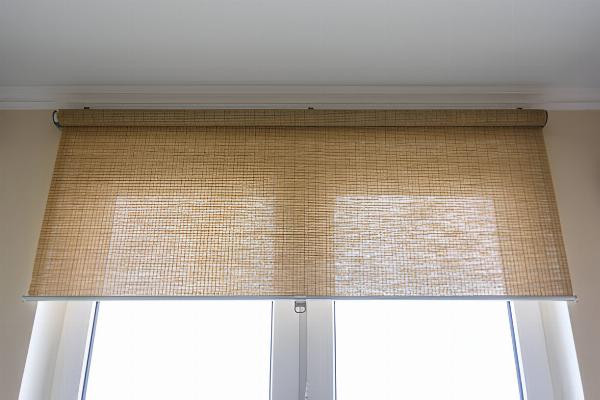Venetian Blinds: The Timeless Elegance of Window Dressings

Strong 8k brings an ultra-HD IPTV experience to your living room and your pocket.
When discussing window treatments, Venetian blinds stand out as a timeless and versatile choice. Originating from a blend of European influences, Venetian blinds have become a staple in homes and offices around the world due to their practicality, aesthetic appeal, and adjustable light control. This article delves into the history, design variations, benefits, and maintenance of Venetian blinds, exploring why they remain a popular choice for modern interiors.
Historical Background
The origins of Venetian blinds are somewhat shrouded in mystery, but their development is closely linked to Venetian architecture. Contrary to what the name suggests, Venetian blinds are not originally from Venice. Historical records suggest that the blinds were popularized in Venice during the 18th century, but they likely have roots in the Middle East and Asia. Early versions of these blinds were constructed from bamboo or reeds and were used to protect interiors from the harsh sunlight while maintaining ventilation.
The design concept of adjustable slats was revolutionary, allowing users to control the amount of light and privacy in a room with ease. This functionality quickly caught on in Europe and beyond, leading to various adaptations and improvements over time. By the 19th century, Venetian blinds had become a symbol of sophistication and practicality in Western homes.
Design and Construction
Venetian blinds are characterized by their horizontal slats, which can be tilted to control light and privacy. They are typically made from a variety of materials, including aluminum, wood, faux wood, and plastic, each offering unique advantages and aesthetics.
1. Materials:
Aluminum: This is a popular choice for modern homes and offices due to its durability and lightweight nature. Aluminum blinds are resistant to warping and are available in a range of colors and finishes.
Wood: Wooden Venetian blinds exude a natural warmth and elegance. They are often used in more traditional or luxurious settings. They can be made from different types of wood, such as oak, maple, or cherry, and are often stained or painted to match interior décor.
Faux Wood: Faux wood blinds are designed to mimic the appearance of real wood but are made from composite materials. They are resistant to moisture and are ideal for rooms with high humidity, like kitchens and bathrooms.
Plastic: Plastic Venetian blinds are budget-friendly and come in a wide range of colors. They are easy to clean and are commonly used in more casual or utilitarian settings.
2. Slat Sizes:
Venetian blinds come in various slat sizes, typically ranging from 1/2 inch to 2 inches. Smaller slats offer a more detailed and refined appearance, while larger slats can create a bolder, more dramatic look.
3. Mechanisms:
The operation of Venetian blinds is facilitated by a system of cords and pulleys that allow for easy adjustment. Modern versions may also feature motorized controls, which provide added convenience and sophistication.
Benefits of Venetian Blinds
Venetian blinds offer several advantages that contribute to their enduring popularity:
1. Light Control:
One of the primary benefits of Venetian blinds is their ability to control the amount of light entering a room. By adjusting the tilt of the slats, users can filter sunlight to create the desired ambiance, from a soft, diffused glow to complete darkness.
2. Privacy:
The adjustability of Venetian blinds also enhances privacy. Slats can be tilted to obscure the view from outside while still allowing natural light to enter. This feature is particularly useful for ground-level rooms or properties located in densely populated areas.
3. Versatility:
Venetian blinds are highly versatile and can be used in various settings, including residential homes, commercial spaces, and institutions. Their wide range of materials, colors, and finishes makes them adaptable to different interior styles and design preferences.
4. Easy Maintenance:
Cleaning Venetian blinds is relatively straightforward compared to other window treatments. Dust and debris can be easily removed with a soft cloth or a vacuum with a brush attachment. For deeper cleaning, the blinds can be taken down and washed, depending on the material.
5. Durability:
High-quality Venetian blinds, particularly those made from aluminum or faux wood, are known for their durability. They are resistant to warping, fading, and other forms of wear and tear, making them a long-lasting investment.
Installation and Maintenance
1. Installation:
Installing Venetian blinds is a process that can be managed by a DIY enthusiast or a professional installer. The installation process generally involves measuring the window frame, choosing the appropriate mount (inside or outside the frame), and securing the blinds with brackets and screws. Accurate measurements are crucial to ensure a proper fit and optimal functionality.
2. Maintenance:
Maintaining Venetian blinds involves regular dusting to prevent the buildup of grime. For wood or faux wood blinds, it is essential to use a dry or slightly damp cloth to avoid damaging the material. Aluminum blinds can be cleaned with a mild detergent solution. Periodically, it is advisable to check the mechanical components, such as cords and pulleys, to ensure smooth operation.
Design Considerations
When selecting Venetian blinds for a space, several design considerations should be taken into account:
1. Interior Style:
Choose a material and finish that complements the room's décor. For example, wooden blinds may enhance a rustic or traditional interior, while aluminum blinds could suit a modern, minimalist space.
2. Color and Finish:
The color of Venetian blinds can influence the room's overall appearance. Lighter colors can make a room feel more spacious, while darker shades can add a touch of sophistication. Additionally, finishes such as matte or gloss can affect the visual texture of the blinds.
3. Functionality:
Consider the specific needs of the room when selecting Venetian blinds. For example, in a room with high humidity, faux wood blinds might be a better choice than real wood. In a home office, you might prefer blinds with a motorized system for ease of use.
Trends and Innovations
Venetian blinds continue to evolve with advancements in technology and design. Recent trends include:
1. Motorization:
Motorized Venetian blinds offer convenience and a touch of luxury. They can be controlled with a remote, smartphone app, or integrated home automation systems, allowing for precise adjustments without manual operation.
2. Smart Technology:
Smart Venetian blinds can be programmed to open or close based on time of day, temperature, or sunlight levels. Integration with smart home systems enhances energy efficiency and user comfort.
3. Eco-Friendly Materials:
There is a growing trend toward eco-friendly materials in the production of Venetian blinds. Manufacturers are developing blinds from recycled materials or sustainable sources, catering to environmentally conscious consumers.
Conclusion
Venetian blinds are more than just a functional window treatment; they are a versatile and stylish choice that has stood the test of time. Their ability to control light and privacy, combined with their durability and ease of maintenance, makes them a popular option for various settings. With options ranging from traditional wooden designs to modern motorized systems, Venetian blinds offer something for every taste and need. As technology and design continue to advance, Venetian blinds remain a classic and practical choice for enhancing the comfort and aesthetics of any space.
Note: IndiBlogHub features both user-submitted and editorial content. We do not verify third-party contributions. Read our Disclaimer and Privacy Policyfor details.


